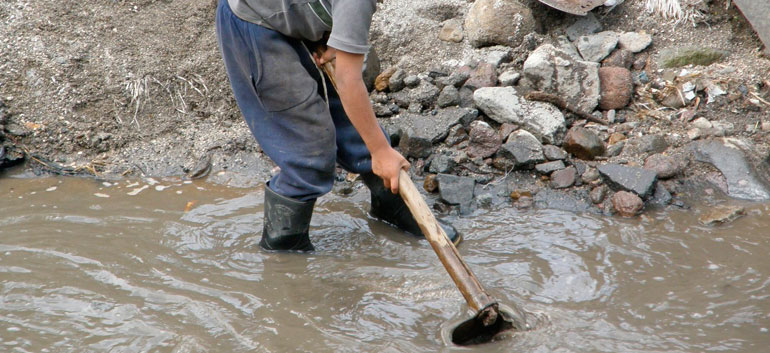As the UN marks its annual World Day Against Child Labour, one in every ten children in Colombia regularly works, national media reported Wednesday.
Of the country’s roughly 1.1 million child laborers, 44% — 490,000 — are under the age of 15. An additional 600,000 are between ages 15 and 17, according to Caracol Radio.
Minister of Labor Juan Carlos Cortes acknowledged that, while the figure has dropped significantly in recent years, the rate is still too high, the national radio station reported.
“The call is to redouble our efforts to built an inclusive society,” he said. “This just society is built from childhood and so all our children have the opportunity and the right to education and social services and are not forced into child labor.”
Cortes said that child laborers, typically part of Colombia’s substantial informal labor economy, stand a poor chance of gaining formal employment later in life, which hampers the overall development and productivity of the economy.
The most common forms of child labor, he said, are found in the service economy — restaurants, hotels, etc. — and are particularly concentrated in the Colombian countryside, where high rates of poverty and longstanding agricultural traditions are prominent factors.
Attempts to mitigate child labor, indicated the minister, should focus on exchanging the trappings of labor “for notebooks, computers, and toys” and should be directed by the government. “We strengthen institutional efforts, so that we have a better country,” said Cortes.
“The challenge is the government’s, but essentially it is a social issue in which the Ministry of Labor ratifies the call that makes Colombian families, employers, and the country’s leaders move forward in the fight against child labor,” the minister said.
According to ILO, child labour is defined as mentally, physically, socially, or morally dangerous and harmful to children. Among other things, it interferes with education by depriving children of the opportunity to attend school, obliging them to leave school prematurely, or requiring them to attempt to balance school attendance with excessively long and heavy work schedules.
According to the UN more than half of the underaged laborers around the world are exposed to grave working conditions such as environmental hazards, slavery and other forms of forced labor, illicit activities including drug trafficking and prostitution, as well as involvement in armed conflicts like Colombia’s, in which children are regularly recruited.
The International Labour Organization (ILO) launched the World Day Against Child Labour in 2002 to focus attention on the global extent of child labor. Each year on June 12, governments, employers and workers organizations join civil society to highlight the issues facing prevention efforts and devise solutions to adress child labor.
According to ILO the global number of minors engaged in child labour has declined by one third since 2000, from 246 million to 168 million children.
Sources
- Information on child labour from official websites of UN and ILO
- En Colombia hay un millón 100.000 niños trabajando: Gobierno (Radio Caracol)


